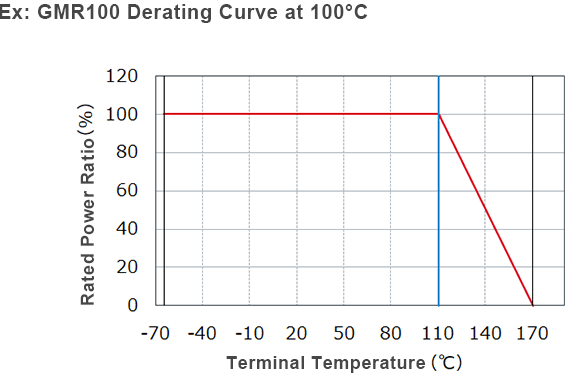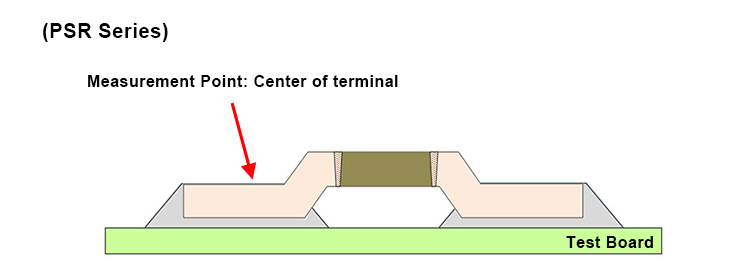Chip Resistor Specifications
High Power Guarantee Using Terminal Temperature Derating
Terminal Temperature Derating
Rated power is conventionally determined based on ambient temperature. When using a part at the rated ambient temperature or higher, power derating must be carried out according to the appropriate power derating curve (a process referred to as ambient temperature derating).
In contrast, terminal temperature derating is not defined by the ambient temperature, but instead on the terminal temperature of the product when power is applied. The maximum value of the terminal temperature at which 100% of the rated power can be applied is called the rated terminal temperature.
Please note that the rated terminal temperature can vary depending on the product series, size, and in some cases the resistance value.

Advantages of Terminal Temperature Derating
As the temperature rise of chip resistors depends in large part on the heat dissipation performance of the board on which the components are mounted, high heat dissipation boards are becoming increasingly popular to meet the growing demand for greater miniaturization and higher density mounting. Utilizing a high heat dissipation board reduces the temperature at the terminals, allowing products to be rated and used at higher power levels.
Terminal Temperature Measurement Point
The measurement point for terminal temperature will vary depending on the product type.
This is to ensure stability during temperature measurement using a thermocouple.


Chip Resistors for Current DetectionDownload datasheet
The next page provides a brief explanation on the temperature coefficient of resistance.




